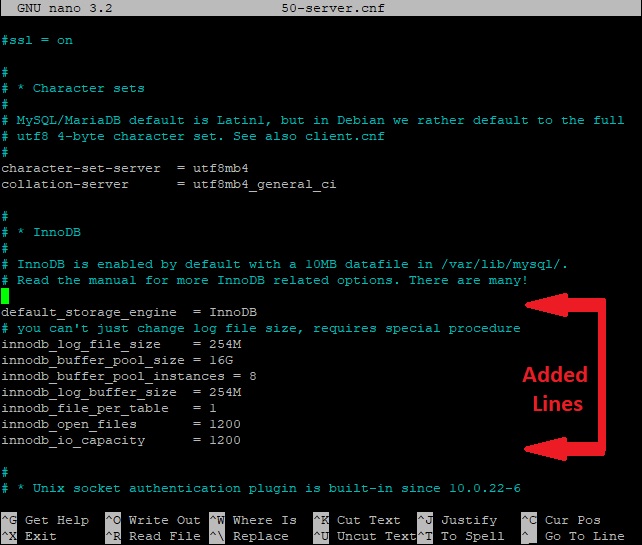Well, after much google searching, server searching, and manual reading, I have finally found a way to do this.
The Good News is that it is the same for Ubuntu v20.04 and Debian 10.
I tried setting up a Ubuntu server to see if there was a difference (yeah, I know, sometimes I overthink this stuff and do way more than is needed).
The file location is /etc/mysql/mariadb.conf.d/50-server.cnf
You will have to use sudo to do anything in this directory.
First make a copy of the file:
cd /etc/mysql/mariadb.conf.d
sudo cp 50-server.cnf 50-server_cnf.orig
Now that you have a copy of the original it is safe to edit the original one:
sudo nano 50-server.cnf
I copied a section of one of the .cnf file from one of my old v10 servers and edited it to work on this new v13 server. Here are the lines I used:
default_storage_engine = InnoDB
# you can't just change log file size, requires special procedure
innodb_log_file_size = 254M
innodb_buffer_pool_size = 16G
innodb_buffer_pool_instances = 8
innodb_log_buffer_size = 254M
innodb_file_per_table = 1
innodb_open_files = 1200
innodb_io_capacity = 1200
Here is a screen shot of where in the file I added them:
The next step is to restart mysql to get the setting recognized in your system:
sudo service mysql restart
Finally, you will want to prove to yourself that the settings were in fact changed and are being used by mysql/mariadb. To do this you start mysql from the command line:
mysql -u root -p[your-password]
(notice there is NO SPACE between the -p and the first character of your password)
Once in the mysql user interface, type the following command to get a list of all innodb settings the system us using:
show variables like 'inno%';
This will display a long list of InnoDB settings that the system is using. You can actually go through the InnoDB manual and add any of these settings to your system if you want to take fine tuning to the maximum level.
The only 4 settings I was interested in were:
innodb_log_file_size = 254M
innodb_buffer_pool_size = 16G
innodb_buffer_pool_instances = 8
innodb_log_buffer_size = 254M
Here is partial screenshots from the output of the mysql command to show that my settings were used:


→ NOTE: These settings are my first attempt at tuning my own system and are NOT recommended for anyone else to use. These settings will likely change as I continue my testing.
Hope this helps someone else trying to find the place to do settings like this.
As always… Your Mileage May Vary! 
BKM
![]()


